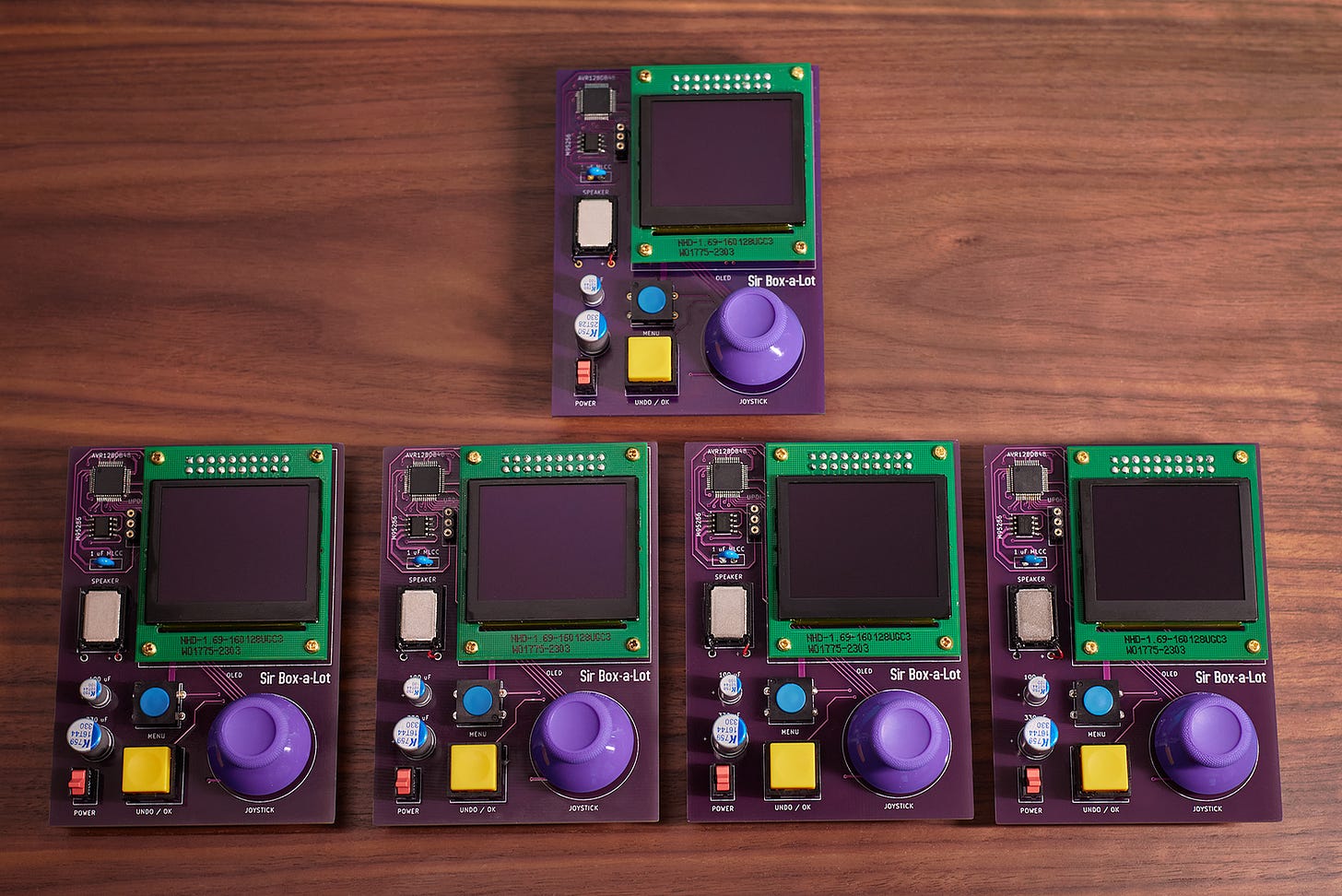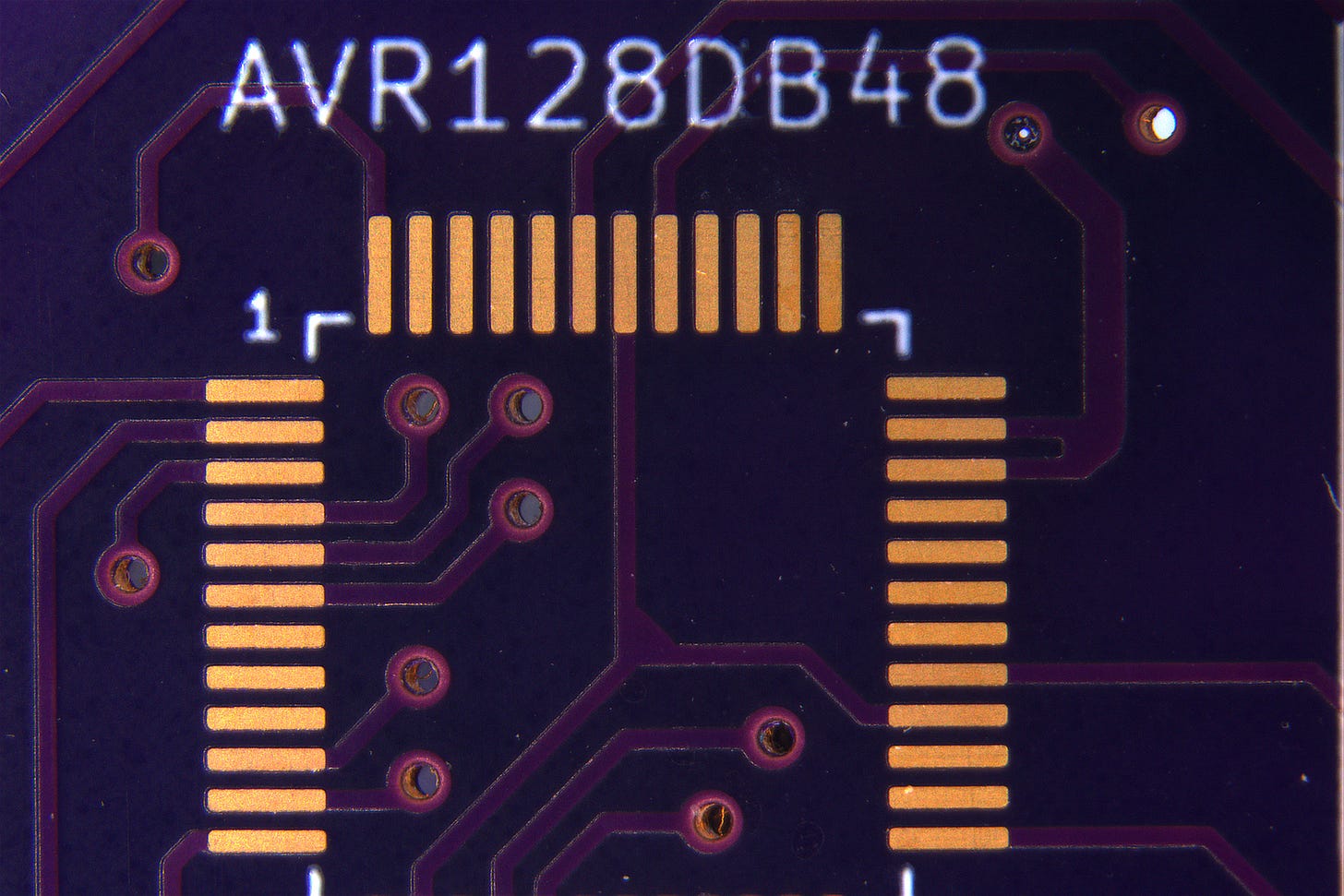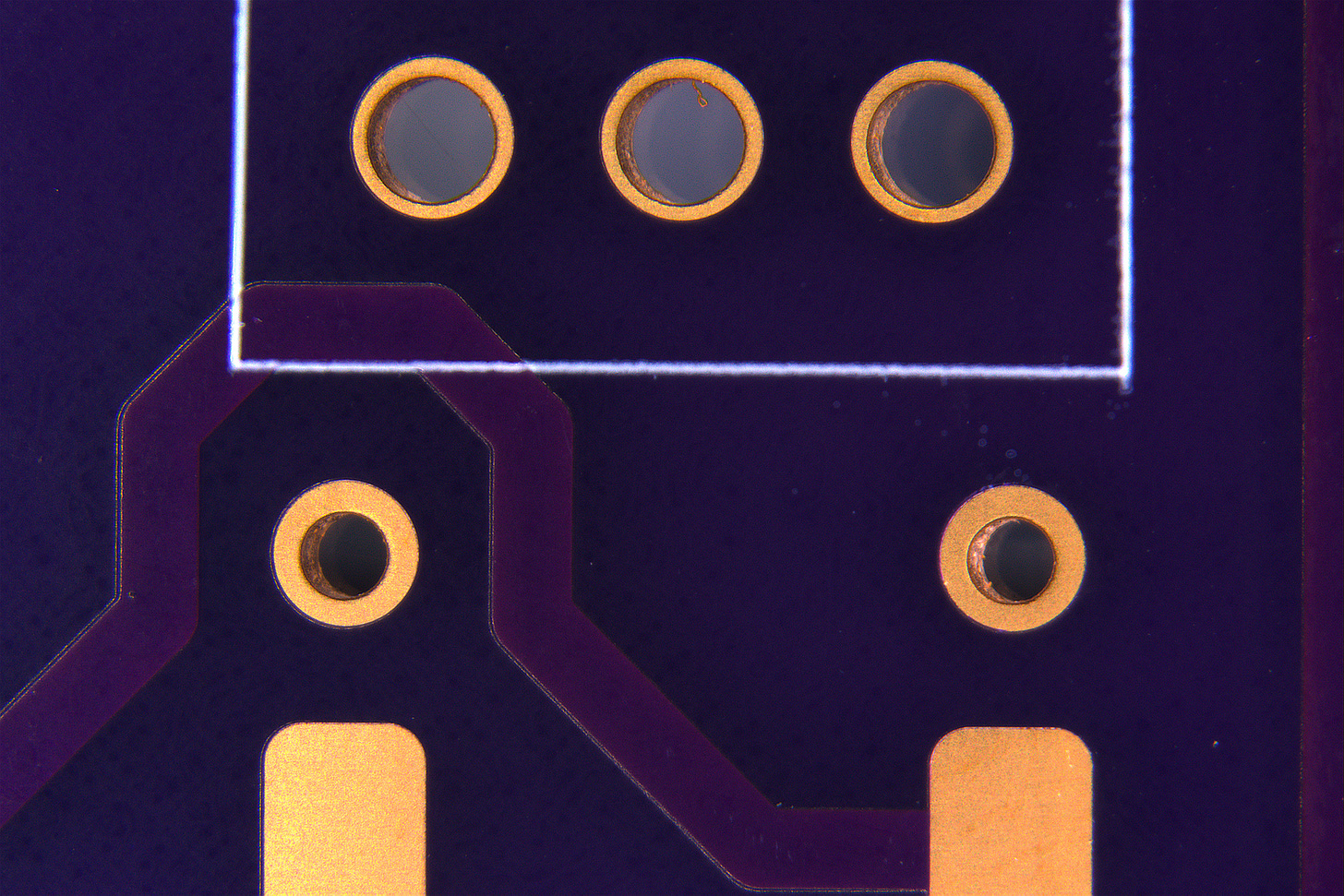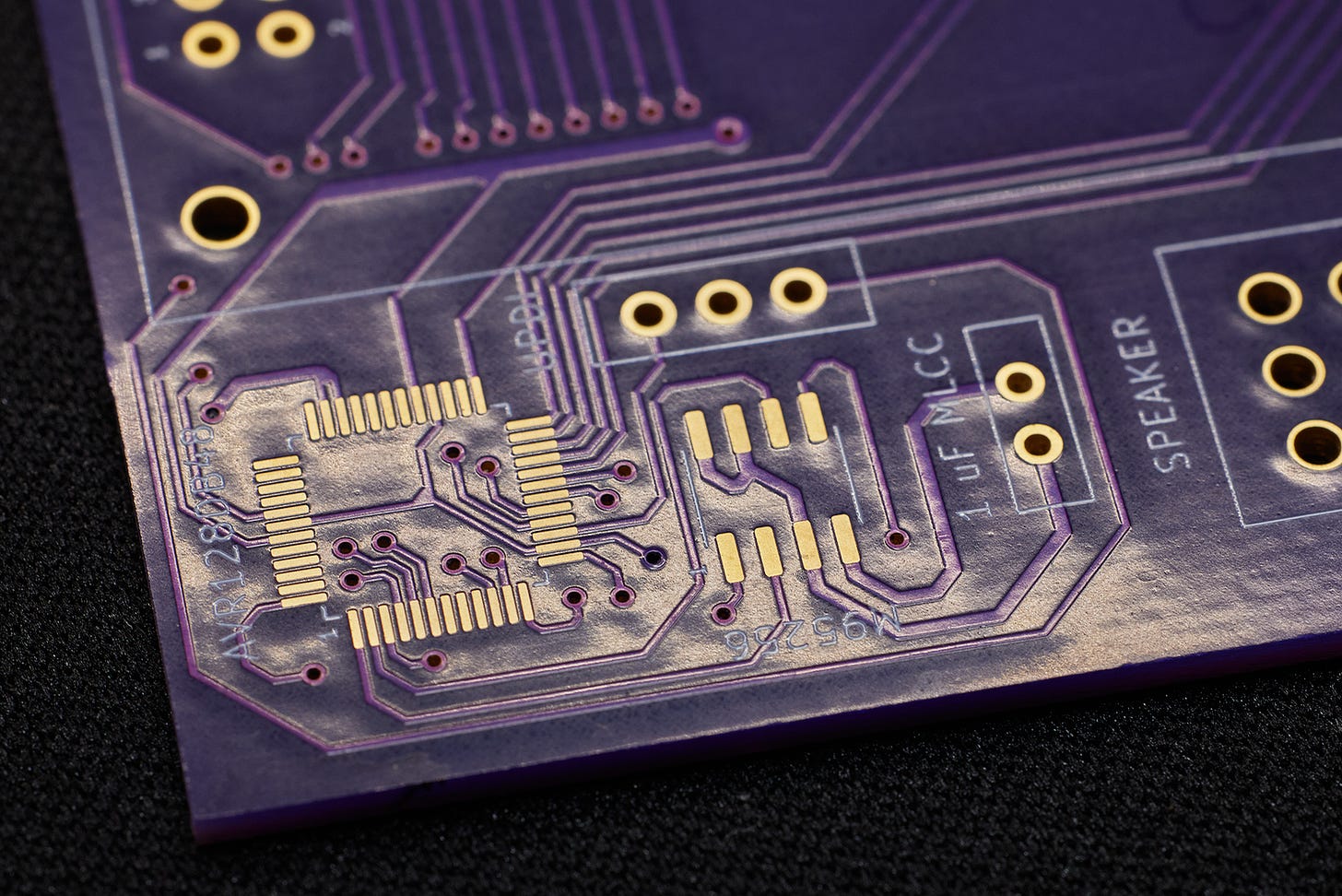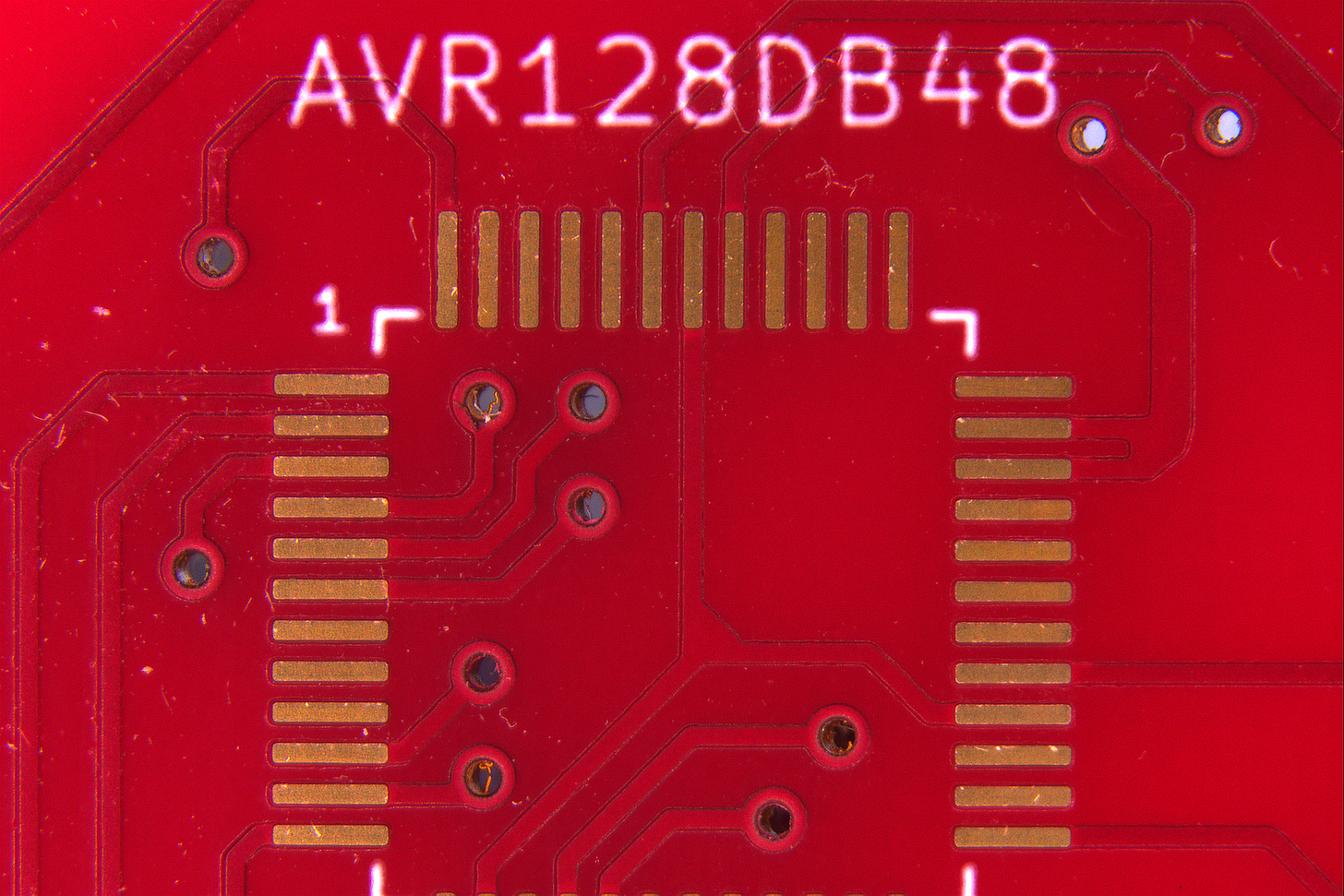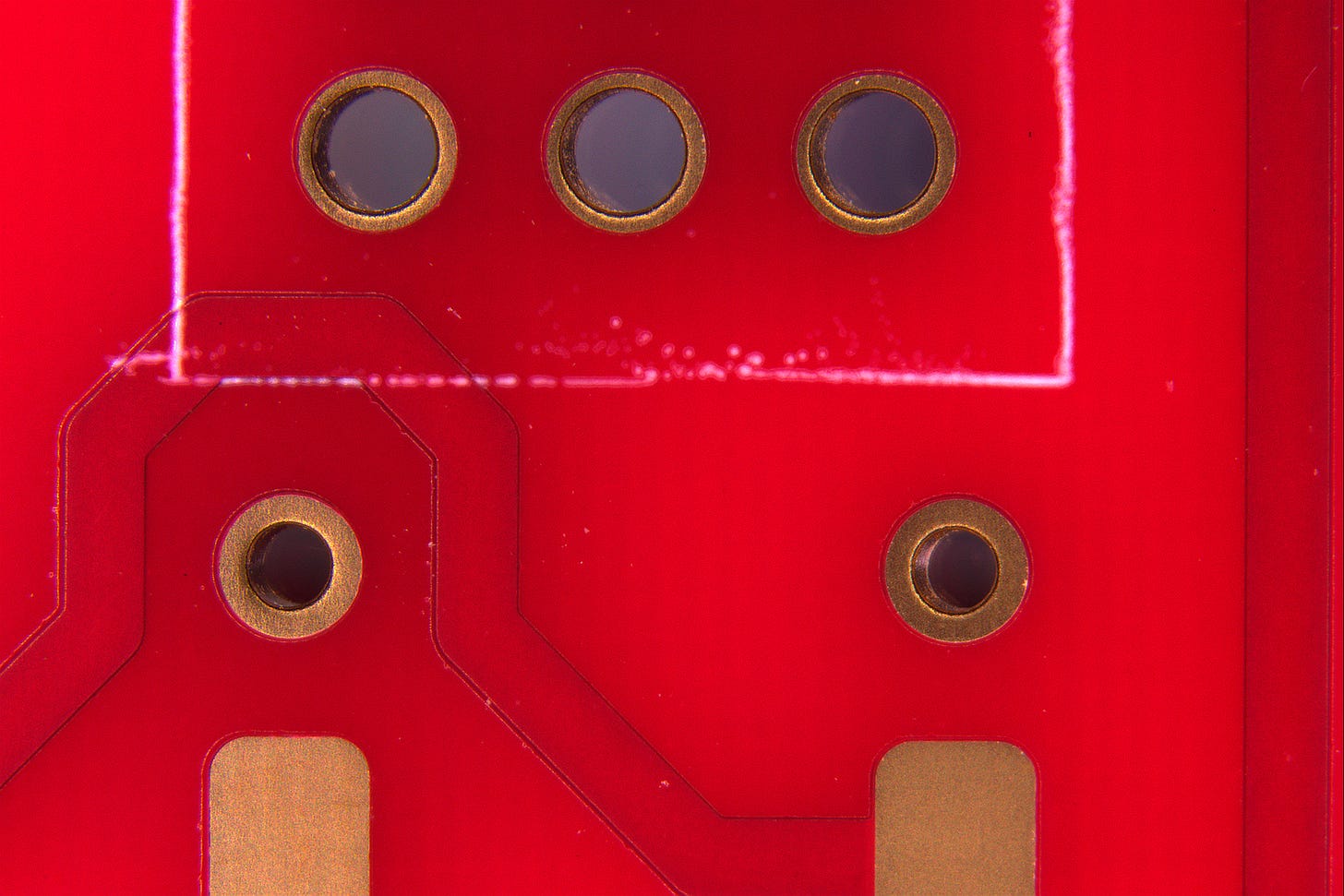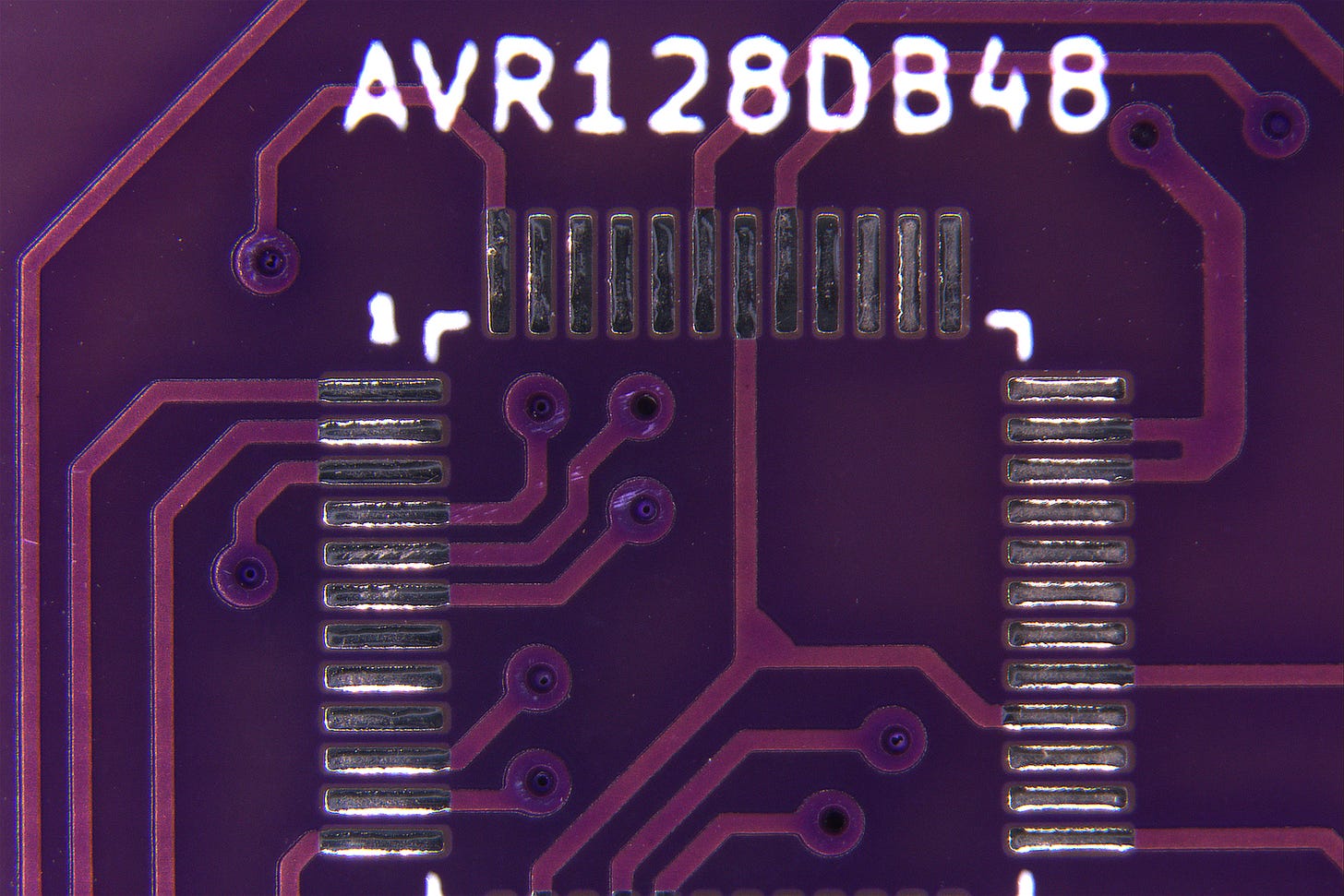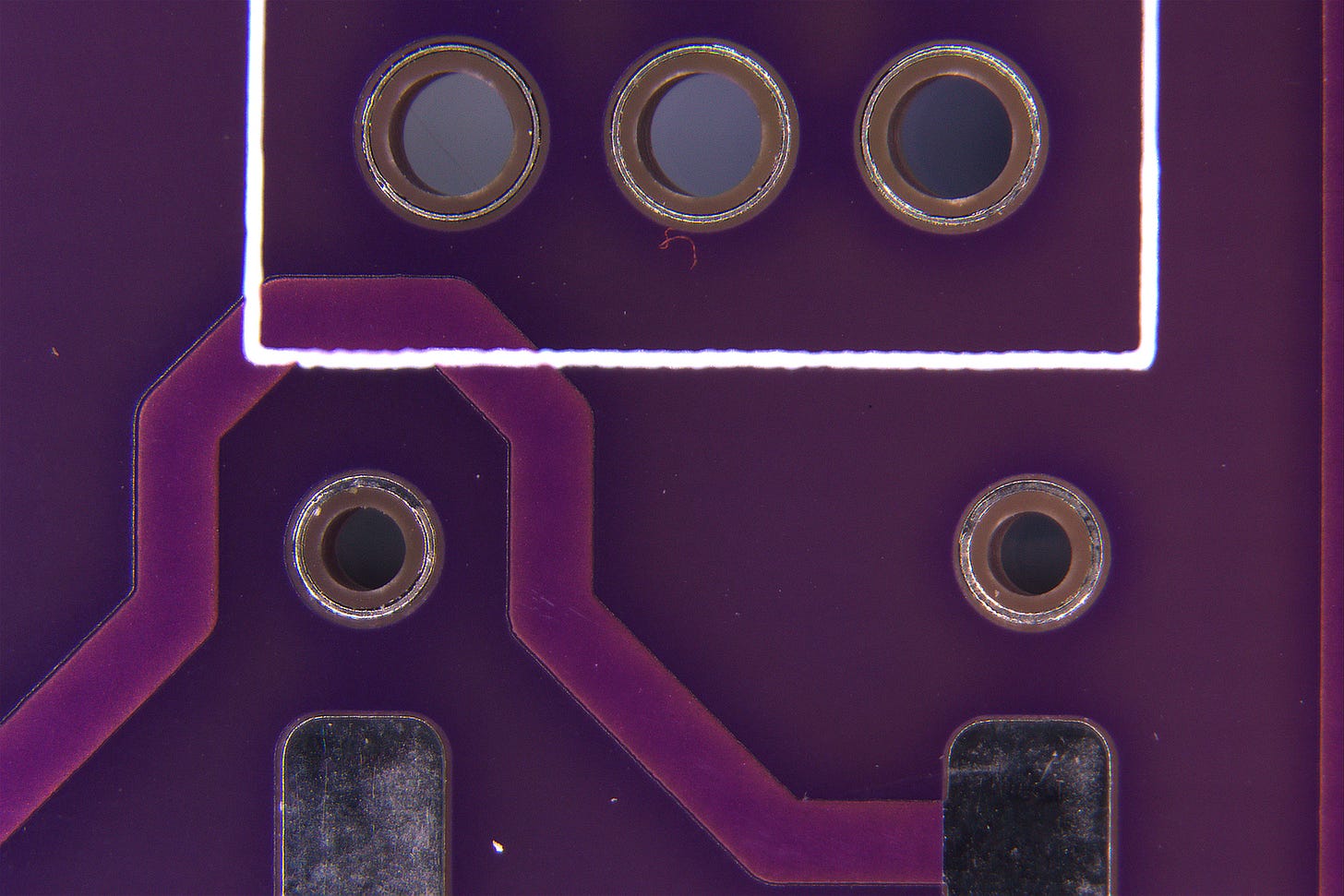

lcamtuf’s thing
source link: https://lcamtuf.substack.com/p/comparing-hobby-pcb-vendors
Go to the source link to view the article. You can view the picture content, updated content and better typesetting reading experience. If the link is broken, please click the button below to view the snapshot at that time.
Comparing hobby PCB vendors
Over the past two weekends or so, I’ve been cranking out Sir Box-a-Lot handhelds for family and friends. There is no way to make a project like this profitable, but the game is more fun than it might appear — and it’s cool to watch recipients’ faces light up after receiving a homemade gift.
Along the way, I ended up ordering the same printed circuit boards from several hobbyist-friendly vendors. Numerous comparisons of quality and cost for different PCB manufacturers can be found on the internet, but many of them are dated or suspect — so I figured it’s worthwhile to experiment and share my notes for 2023.
OSH Park
OSH Park is by far the best-known hobby PCB source in the United States. They do not do in-house manufacturing; instead, they combine multiple small orders into a single panel, send this bulk order to a fabricator, then chop up the panel and ship your boards back to you.
The service is fairly expensive: a single Sir Box-a-Lot PCB (6.5×9 cm) costs about $15 shipped, and you need to order at least three. Rush orders are twice as much; a discounted bulk service brings the price down to $9 a board, but in that case, I’d need to order at least 20 PCBs. It is still cheaper than placing a low-volume order directly with a domestic manufacturer, but it adds a hefty price tag to some projects — and it’s a lot of money down the drain if you mess up the design.
On the flip side, the boards I received from OSH are best described as beautiful. Solder mask is robust and aligned perfectly. Gold-plated (ENIG) pads show no defects. Silkscreen text down to 0.6 mm (the “1” pin marker) is perfectly legible:
Vias appear somewhat larger than specified in my Gerber files; I’d guess 0.5 mm instead of 0.4 mm. They are also minimally off-center — although not enough to cause any practical issues.
The overall appearance of the board is superb, with no dings, scrapes, or other defects in sight. The ordering experience was great too — down to the last-minute ability to upload revised Gerber files if you spot any errors down the line.
DigiKey Red
DigiKey Red is a direct competitor to OSH. The service follows a similar business model of aggregating orders and then shipping them off to a PCB manufacturer; the manufacturer in question appears to be Royal Circuits in Hollister, CA.
The pricing is comparable to OSH: for Sir Box-a-Lot, it amounted to $14 per board with shipping, four boards minimum. In contrast to OSH, the boards are sent to you directly from the fabricator, but the service is actually slower than OSH — perhaps owing to lower order volumes. There is an expedited option costing twice as much, but no discount if you order more boards.
Compared to OSH, the ordering experience is considerably less polished. There are no updates along the way and no customer support to speak of; I tried to get in touch with a live person and had no luck. At some point, a package containing the boards, maybe with some rejects mixed in, will just show up in the mail. Perhaps in two weeks, perhaps not.
Functionally, the quality of the boards is comparable to OSH. Once again, the solder mask is flawless, and so are the ENIG-finished pads. Vias appear even larger than on the OSH board — perhaps 0.6 mm instead of 0.4 mm? — but they are better centered, so I think I can let that slide.
Silkscreen is another matter. The text looks OK, but areas with long straight lines turned out to be a mess:
The cleanliness of the boards also left something to be desired: each and every one was covered in adhesive gunk, possibly from double-sided tape used for fixturing. Nothing here is a showstopper — but overall, I found the experience to be disappointing for the price.
JLCPCB
JLCPCB is a Shenzhen-based manufacturer that caters directly to hobbyists — something too icky for the tastes of its US counterparts. The JLC model has two advantages. First, they offer a wide variety of process choices, whereas DKR and OSH are one-size-fits-all. Just as importantly, in-house manufacturing is faster than shipping boards back and forth: I ordered from JLC a couple of times, and every time, I received the boards within 7 days.
JLCPCB is remarkably inexpensive: a single Sir Box-a-Lot board costs about $1.50 to $2.00 shipped to your door if you order fifteen or so. And for the price, the quality is excellent, even if it doesn’t quite match OSH Park or DigiKey Red.
Here’s a close-up of a JLC board, showing well-aligned true-to-spec vias and HASL-finished pads with a tiny bit of JLC-added solder mask setback. The silkscreen is competent, but loses legibility below 1 mm:
Compared to the other two vendors, JLC solder mask layer is thinner and more fragile; it can be scraped off fairly easily and will come off if you keep reworking the same pad; in fact, one or two boards came with small scrapes from the factory. The mask still does what it’s supposed to do, but if you’re designing a device meant to be used without an enclosure, you should expect the mask to quickly acquire some wear and tear. Conformal coating might help.
My board design had a couple of mechanical holes with zero-clearance annular copper rings. As seen above, JLC added setbacks on the annular rings, leaving little metal in place; both DKR and OSH plated the holes instead. It doesn’t matter in this particular case, but it’s a good reminder to avoid ambiguity in one’s designs.
What about other choices?
In the US, your options are limited: although you can work directly with a manufacturer, you should expect to pay $350 or so for a couple of boards — or in excess of $1,000 if you need the PCBs soon.
There are some other choices in allied countries; Germany-based Aisler is of special note. Given their added shipping costs, they are not competitive for small orders, but slightly higher volumes look better: the quote for twenty Sir Box-a-Lot boards came out to $4.50 a piece. I will probably give them a try in the future, although their solder mask color wasn’t a good fit for this particular project.
China-based vendors are plentiful, but few come close to JLCPCB in terms of speed, pricing, and consistent quality. A noteworthy contender is PCBWay; I don’t have a Sir Box-a-Lot board from them, but they offer a somewhat wider selection of process choices — including some additional solder mask colors — for a slightly higher price. Their fulfillment also appears to be a bit slower, although it will still beat domestic panel aggregator shops.
For advice on designing your own PCBs, click here. A list of other electronics-related articles on this blog can be found here.
Recommend
About Joyk
Aggregate valuable and interesting links.
Joyk means Joy of geeK
